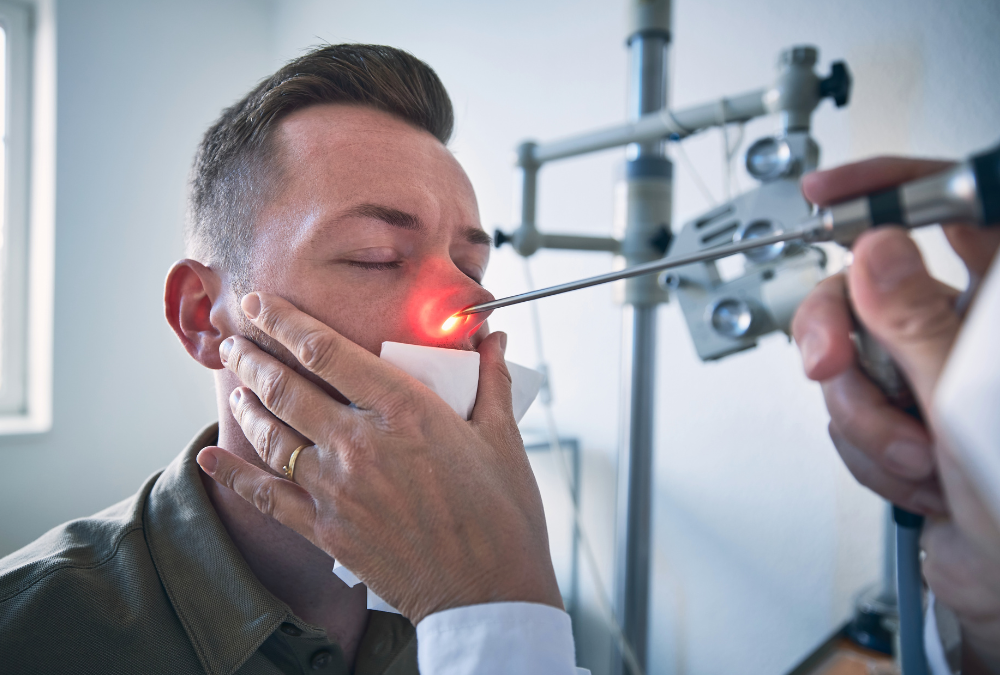A balloon sinuplasty is a minimally invasive—yet highly effective—treatment option for chronic sinusitis or sinus infections.
If you struggle with either of these conditions or even consistent congestion, you may be an ideal candidate for balloon sinuplasty in Irvine, CA. Keep reading to learn more about who is eligible for this minimally invasive procedure.
Understanding Balloon Sinuplasty
The first line of defense against chronic inflammation is antibiotics, but those don’t always work. If a patient has experienced several or recurring sinus infections, an ear, nose, and throat (ENT) specialist may look at other solutions like an endoscopic sinus surgery to physically shave away the nasal blockage. However, this is a surgical procedure that involves anesthetics, tissue removal, and a significant recovery period.
Of course, there are risks that come with surgery, and many patients don’t want to have general anesthesia or experience a recovery process. That’s why a balloon sinuplasty is often a preferred option.
A balloon sinuplasty in Irvine, CA, is a simple outpatient procedure that an ENT specialist performs right in their office. It involves local—not general—anesthesia so patients are awake during the procedure and can return to their normal activities within 24 hours.
The balloon sinuplasty process is fairly simple. The ENT specialist inserts a balloon catheter into the sinuses. They then inflate that tiny balloon to expand the sinuses without damaging them. Before the specialist removes the catheter, they spray a saline solution into the sinuses to flush out any previously trapped pus and mucus.
The entire process—including the pre- and post-treatment evaluation—takes about two hours. Afterwards, patients experience immediate relief and a minimal recovery period.
Symptoms and Conditions Suitable for Balloon Sinuplasty

Balloon sinuplasty also works for other conditions, like recurrent sinus infections. If patients have four or more infections each year—or one that just doesn’t go away—they may be caused by a nasal blockage. If the sinuses can’t properly drain, then bacteria can get trapped and cause perpetual infections. By expanding and flushing the nasal passages with a balloon sinuplasty, the ENT specialist can remove the root cause and break the neverending sinus infection cycle.
Even if a patient doesn’t have an official chronic sinusitis or sinus infection diagnosis, they may still be a candidate for a balloon sinuplasty. For example, a patient with continual nasal blockage and congestion that affects their ability to breathe, sleep, or concentrate may need something more permanent than temporary congestion relief. And a balloon sinuplasty can help by widening the nasal passageways for better breathing and decongestion.
Factors that Determine Balloon Sinuplasty Candidacy
ENT specialists often recommend medication, antibiotics, or over-the-counter meds as initial treatments since sinus infections, and sinusitis are caused by a variety of factors. However, if the symptoms continue for months or years, then a balloon sinuplasty often becomes a viable medical intervention.
In addition to discussing the length of symptoms and previous treatments, an ENT specialist will complete a thorough examination. This might include some tests for enhanced visibility, like imaging techniques or nasal endoscopy. The latter requires an anesthetic spray or shot so that the ENT specialist can insert a camera tube into the sinuses.
Other candidacy factors include medical history and overall health. The ENT specialist will ask about any underlying conditions and current medications that may affect the procedure. This discussion will also review any risks or complications that could arise, although a balloon sinuplasty is generally much safer than traditional surgery and treatment alternatives.
Other Considerations for Balloon Sinuplasty Candidacy
When asking about medical history, the ENT specialist will also review any allergies and sensitivities that the patient may have. For example, some people can have a reaction to the local anesthetic. While true allergic reactions are rare, they can happen. Plus, sensitivities can cause other reactions—like a racing heart rate. If the patient has any allergies or sensitivities to anesthesia, metal equipment, or latex, the ENT specialist can make special accommodations before the procedure.
Another consideration is the patient’s expectations. Even though balloon sinuplasty is a minimally invasive procedure, it’s still a medical procedure. Patients should be aware of what that entails, from being awake during the procedure to taking one or two days off to recover.
Age and Balloon Sinuplasty
A common consideration for any medical procedure is age. However, overall health is often the most significant factor other than age, especially when it comes to minimally invasive procedures like balloon sinuplasty.
As such, both children and adults can be candidates for balloon sinuplasty. While the procedure might be more common in adults—particularly those with a deviated septum caused by an injury or aging—it’s also appropriate for children. The FDA has even approved certain balloon sinuplasty devices for children as young as two experiencing chronic sinusitis.
Sinusitis has no age limit, so there are treatment options for patients of all ages. The good thing about a balloon sinuplasty is that it’s minimally invasive, meaning that young children and elderly patients alike don’t have to deal with the effects of general anesthesia. They can get immediate relief with minimal discomfort.
Consultation with an ENT Specialist
Patients struggling with headaches, sleeping issues, and congestion related to sinus inflammation may find relief with a balloon sinuplasty. However, the only person who can decide if that’s the right treatment method is an experienced ENT specialist. They will consider a patient’s medical history, physical exam, and symptoms before making a decision.
Key Takeaways
If you’re struggling with consistent sinusitis—or even congestion and headaches that don’t go away—talk to an ENT specialist about your treatment options. They can help you decide if you should first try a round of antibiotics or if you’re an ideal candidate for a balloon sinuplasty in Irvine, CA.
An experienced ENT specialist can provide you with an appropriate treatment plan to alleviate your symptoms. Schedule your initial consultation today!

